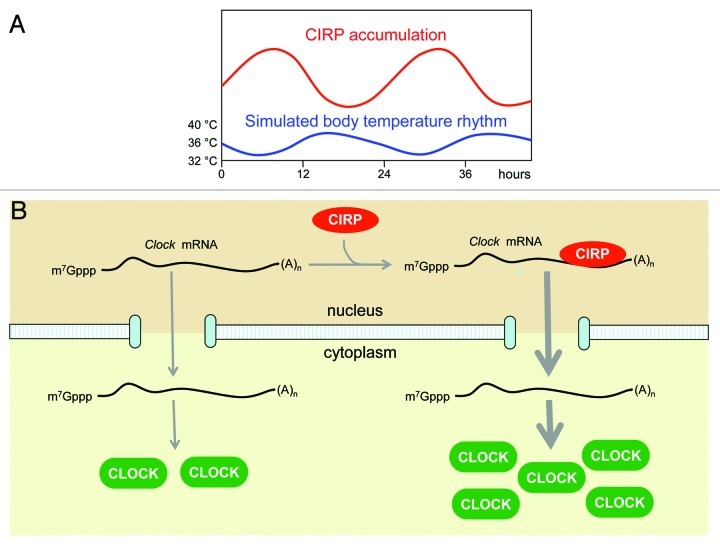Figure 1. (A) Simulated mouse body temperature rhythms oscillating smoothly between 34°C and 38°C are sufficient to engender robust 24-h CIRP mRNA and protein accumulation cycles in cultured fibroblasts (schematic representation). (B) In the nucleus CIRP binds to 3′ untranslated regions (and, on occasion, intron sequences) of several hundred transcripts. One such transcript encodes the circadian core clock transcription factor CLOCK. If CIRP is depleted, less Clock mRNA reaches the cytoplasm and CLOCK protein concentrations drop to levels that are no longer capable of supporting high-amplitude circadian gene expression cycles. It still remains to be shown, however, whether the temperature-dependent CIRP accumulation rhythms shown schematically in panel (A) contribute to the temporal CLOCK protein expression pattern.

An official website of the United States government
Here's how you know
Official websites use .gov
A
.gov website belongs to an official
government organization in the United States.
Secure .gov websites use HTTPS
A lock (
) or https:// means you've safely
connected to the .gov website. Share sensitive
information only on official, secure websites.
